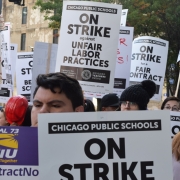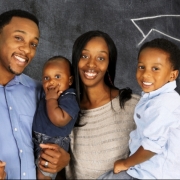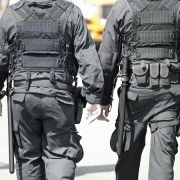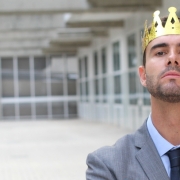Unions Fight For Teachers At The Expense Of Our Children.
One of the first things we learned about the coronavirus is that it has a near-zero death rate for kids. We also soon found that children are far less likely to transmit the virus than adults.
Considering these facts, one might reasonably expect that schools would be some of the first institutions to reopen amid government-mandated pandemic lockdowns and stay-at-home restrictions. Because there are very few public health risks—and because education and childcare are among the most essential functions of our society—allowing schools to reopen should have been the easy choice.
This, however, is not what has happened. Many schools across the country have remained closed since March, and even those which opened have done so with tremendous unpredictability and usually within a limited framework. Some schools have opened this fall only to be ordered to close once again when a second wave of COVID-19 cases emerged.
Why have our elected officials chosen to shut down schools despite all the evidence?
Contrary to what you may think, it is not primarily because of scientific recommendations made by experts, but rather largely due to deals cut between politicians and teachers’ unions. This is evidenced by a working paper authored by two political science professors that looked at over 10,000 school districts across the country. It found that regardless of the virus’s actual prevalence in local communities, districts with stronger teachers’ unions were less likely to reopen schools for in-person learning.
In New York City, for example, the United Federation of Teachers struck a deal with Mayor Bill de Blasio. They agreed that teachers would only return to the classroom if the mayor promised to re-close schools if the city’s COVID-19 positivity rate—the percentage of tests coming back positive—hit 3 percent. The positivity rate inevitably rose above that low 3 percent bar, and the schools were promptly closed down again.
If science had actually been paramount to this decision, it would be important to note that while the city-wide positivity rate was 3 percent, the positivity rate within schools themselves was only 0.15 percent. There was no actual scientific reason to close schools down again. But far more influential than scientific considerations were raw politics—raw politics at the expense of children’s education.
Unfortunately, these decisions to keep schools closed have had far-reaching consequences, such as increased mental-health challenges, decreased educational quality, and added stress on families that may have no stay-at-home parents. This, however, is evidently of no concern to the leaders of teachers’ unions because it is not their job to represent children, but rather only their dues-paying members.
“Union leaders say the narrative that they’re acting as obstructionists and pushing to keep schools closed is unfair,” EducationWeek reports. “They say they’re only asking for reopenings to be done safely.”
This excuse doesn’t cut it. Studies have consistently shown that school reopenings are not a major contributor to outbreaks of COVID-19. So, if 2020 has taught us anything, it’s that we never should have underestimated the sheer power of teachers’ unions.
Earlier this year, economist Thomas Sowell released a book titled Charter Schools and Their Enemies. In it, he issues a stunning indictment of the traditional public school system, teachers’ unions, and the politicians who will face political consequences if they defy incumbent powers. He masterfully analyzes the educational outcomes of low-income students who go to charter schools compared to their similarly situated peers in traditional public schools. By the end of the book, the reader is left outraged at the injustice done to ordinary students by those in power.
Sowell points out that while only 10 percent of the traditional public schools he studied had a majority of students passing at the “proficient” level on the mathematics exam, 68 percent of charter schools achieved that level. When it comes to the English test, the numbers are 14 percent and 65 percent respectively.
This is regrettable, because students who are not provided a quality education when they are young may never gain the marketable skills necessary to compete for a well-paying job later in life. Foundational skills in math and English are of crucial importance and the stakes here are high.
The reason charter schools are consistently more successful than comparable traditional public schools is simple: they operate under different incentives and constraints. Charter schools can only remain operational if they are providing a service that is desirable enough to attract students. Traditional public schools, on the other hand, operate as a monopoly where students are given no other choice than to attend that school.
Another key difference is the extent to which teachers are held accountable for the educational outcomes in their classrooms. In New York City, it takes an average of 830 days and $313,000 to fire a single incompetent teacher, largely due to policy negotiated by teachers’ unions. In charter schools, teachers are generally not unionized, and they can be fired for incompetence much more easily.
So, despite its widespread success, teachers’ unions and their political allies consistently fight to block and limit the charter school system. Why, Sowell ponders, is there such hostility toward such a successful system?
“There are millions of reasons,” he writes. “Namely, millions of dollars.”
This points to a fundamental truth: The interests of teachers’ unions seldom align with those of children. This was true prior to the pandemic, and it has only been underscored in recent months.
Of course, that’s not to say that teachers’ unions are inherently evil, but rather that their job is to advance the interests of teachers—not students. The issue arises when the interests of teachers sharply diverge from those of students.
While it is in the best interest of many children to learn in-person, teachers’ unions will advocate for online learning in order to look out for the health and comfort of their members—no matter how low the actual risk may be. While it is in the best interest of children to go to successful charter schools, it is in the interest of teachers to be protected by their union irrespective of performance.
It is because of these political pressures, Sowell explains, that 50,000 kids remain on waitlists to get into charter schools in New York City despite their proven success.
While these were all issues before the pandemic, COVID-19 has solidified the case against the traditional public school monopolies and the immense power of teachers’ unions. Their willingness to put children last and fight to keep schools closed has proven once and for all that teachers’ unions do not, in fact, have kids’ best interests at heart.
Fighting for teachers at the expense of the children they are teaching is the exact opposite of noble. For this reason, we must fight to reign in the influence of teachers’ unions and embrace the emergence of charter schools, private school choice programs, and homeschooling around the country.








